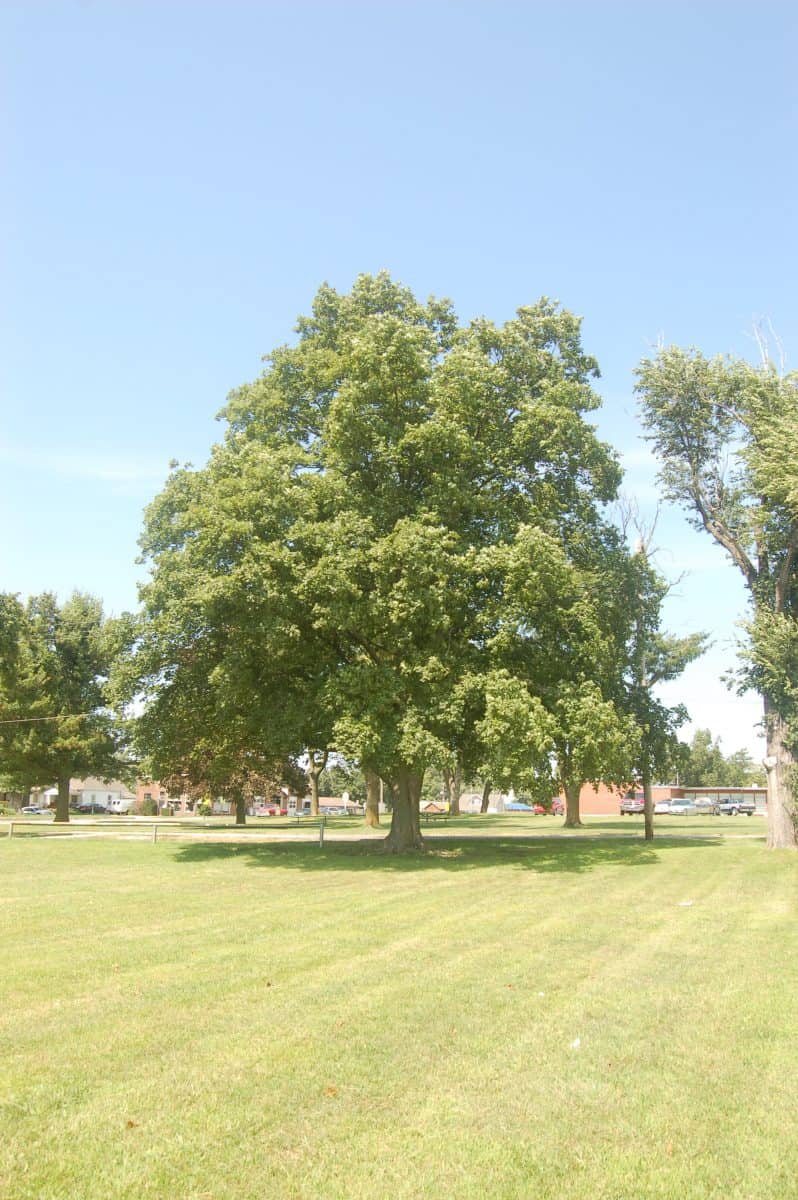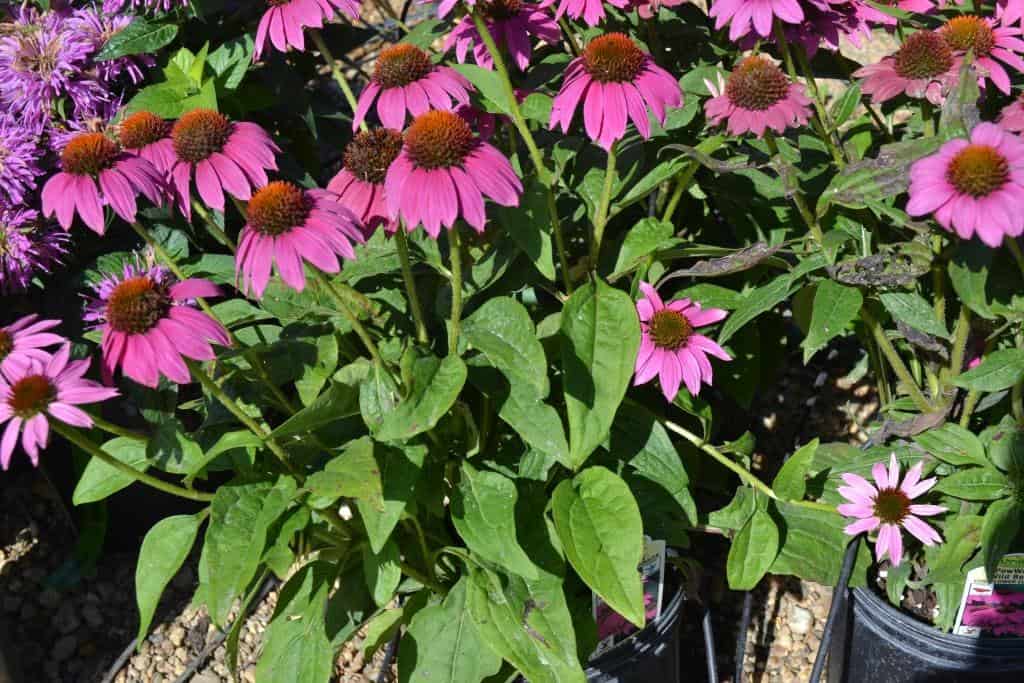Living in the central Great Plains can be a challenge: prairie fires, extreme temperature swings, wind, chemical drift, drought, and soil quality. For many of us, soil quality can be a determining factor in choosing plants for our garden. I have been fortunate to have great silt clay loam soil in my garden, but I have also dealt with some of the heaviest clay soils in Kansas, there was a brick plant less than two miles from where I was raised. What does all this mean? Young gardeners often ask what the problems with clay soils are after buying plants. What is silt clay or sandy silt loam? Why is it important to find out what my soil is like before picking plants?
Pictured above: Purple Coneflowers grow well in clay soil.
Soils, unbeknownst to many new gardeners, are the roots of the garden, the most important thing to a healthy garden. If you don’t know what your soil type is, there is help. There are many things to consider when working with and developing healthy soil; percentage of organic matter, soil texture and structure, micro-organisms, pH balance, and soil coverage are a few of the many. Let’s dig in.
Organic matter is a great component of a healthy soil, and once upon a time, it was not a problem for the Great Plains. When we first set foot on this great expanse of natural prairie, the topsoil was several feet thick in places and was full of organic matter in a form broken down by micro-organisms working on the ash and dead stalks of the grasses. Now, the micro-organisms are almost all gone and most of our organic matter has been used up. Organic matter is a loose term, it refers to the partially broken down plant parts that are abundant in healthy soils. Still, too much organic matter can be bad. Organic matter improves the soil’s ability to hold onto nutrients instead of allowing them to leach through the soil and into the water supply, but too much organic matter will bind up nutrients, keeping them unavailable from the plants that need them.
PH balance refers to the percentage of hydrogen ions in the soil. Why is it important? It determines whether a soil is alkaline, acidic, or neutral. The range goes from 0.0 (Acid) to 14.0 (Alkaline) with 5.5-7.0 considered neutral and the best for most plants. A soil test can tell us what the pH balance is and what we need to do to correct it. For most of us, our local extension agencies can help us collect a soil test and send it in to a university with a soil testing lab. If our soil is too alkaline, we may need to add sulfur to lower it; if it is too acidic, we can add lime to raise it. At the neutral range, good bacteria in the soil will work to release nutrients held by organic matter.
Soil texture is the percentage of sand, silt, or clay. A simple jar test can determine what kind of soil we may have. To do this, collect some soil from different places in your proposed garden area. Put it in a five gallon bucket and mix together. Take a few handfuls and put it into a glass mason jar, and fill water to the top. Put the lid and ring on and shake vigorously. Set on a table and let it settle for twenty-four hours. After twenty-four hours, there should be a clear separation of soil particles in the jar. Sand is the largest particle and will settle to the bottom. Next is silt, it will be in the middle. Clay is the smallest particle and will be on top. Most of us in this area will have clay as the largest amount. Do not worry, there is help.
When we begin to think of improving our high clay soils, it is important to know about the above, to better determine what to add. If you get on the internet, there will be many who advise adding sand to clay soil. DO NOT add sand. By adding sand to a heavy clay soil, you can actually create concrete when it gets wet. Clay particles and sand mixed together can create a simulation of concrete when wet, making your soil useless. The best way to start is to do a soil test, and then add nutrients as needed according to the test. Then, incorporate organic matter with light tilling. The best organic matter to add is in the form of compost, worm castings, chopped leaves, or composted manure. Be care of some manures; manure from feedlots may contain high levels of toxic metals or hormones. Compost from grass clippings may contain herbicides which can burn your plant’s roots. Do not over-till your beds before planting, just a few times over is enough.
Another important thing to remember when improving your soil is covering. Organic mulches such as wood chips, cocoa hulls, or chopped alfalfa will continue to improve your soil as they break down. When using weed barrier and stone, your soil will not improve after your initial work.
Pictured above: Hiawatha Oregan Trail Sugar Maple. This tree also does well in clay soils.
This is a lot of information for any gardener, but very important. You need to know your soils before you dig in. Even after improving your soil, the clay will remain and will contribute to the detriment of some plants. Plants native to the central Great Plains and cultivars of them are the best bet for these soils, many are already adapted. Also, plants grown nearby will be already acclimated to our climate and soil anomalies. The following tables are lists of long blooming perennials, shrubs, and trees that are adapted to clay soils. However, there are thousands of plants available, you just need to experiment and find a local expert for advice.
Perennials
 Shrubs
Shrubs
Trees








My experience with river birch is that the tree Heritage river birch does not do well in clay The tree needs an acidic soil that drains well. Had a river birch in our front yard which “suffocated ” during a wet year. In the back yard one birch did fine in loose well draining soil. In the case of a second birch in well draining soil but ph of 7 turned yellow which was corrected by granular sulfur obtained at a feed store. Sulfur is used as a cattle feed supplement and $25 will get you 50 lbs. Nursery prices for sulfur much higher. Works on white pine too. Sulfur one of the benefits of the petroleum industry! Azaleas also love sulfur. Could not grow azaleas in our area without sulfur and peat moss.
Great article , thank you for the info!